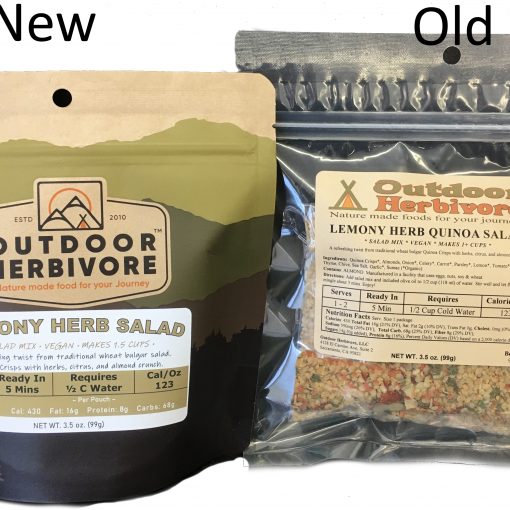The main job of a food storage bag is to prevent moisture and air from permeating the contents inside. Standard household freezer bags are readily available and inexpensive, making them appealing for storing homemade dry foods or repacking commercial backpacking food to reduce space. Storing dry food long-term in non-barrier packaging like plastic freezer bags will allow oxygen and moisture from the surrounding air to absorb into the food, where bacterial contamination and growth can occur. Eventually, the food will become soggy and mold. If this happens, the food will be unsafe to eat. Freezer bags will work okay for […]
Cook in Bag
In our previous post, we mentioned that we were in the midst of a packaging update. If you have ordered from us recently, you’ve likely received one of the new pouches. We are now transitioning all of our meals in the new packaging. Many of you have requested our food be packaged in heat-safe “rehydration pouches” since our inception in 2010. Our resistance stemmed from the idea that the industry standard, ‘add hot water to the pouch’, was excessively wasteful and a potential health hazard. Compact and simplistic packaging is a significant component of reducing waste and keeping costs low. […]
As a proponent of minimalism, our simplistic packaging has always made sense. Its compact size enfolds each meal, leaving no wasted space. Our 7-day backpacking food combo (a total of 22 meal packets) is so efficient for packing that it merely takes up 500 cubic inches (~8 L) of volume in an average 9 to 10 L bear canister. Outdoor Herbivore 22 single meals packed in the 10 L Garcia Bear Canister. While these compact packets are exceptional for packing and saving weight, they’re not so good for preparing food. As you can see below, there’s barely enough room to […]
Our boil-soak pouches are designed for backpackers who need a reliable bag to store dried meals and reconstitute them by adding boiling water. These high-temperature stand-up “cook-in pouches” can withstand temperatures up to 230 degrees Fahrenheit (110 degrees Celsius). With a shorter bowl shape, each pouch can hold up to 4 cups (0.95 liters) of liquid. How to use: Place food in the bag, pour boiling water over it, stir, seal shut with the zipper, and allow the food to reconstitute for several minutes. Below, we demonstrate reconstituting a dried meal mix using the boil-soak pouch with Outdoor Herbivore’s Lemongrass […]
You may already know that Outdoor Herbivore is against the use of heating foods inside of soft plastic. It doesn’t align with our view of producing backpacking food made from high quality, organic ingredients, and subsequently urging hikers to pour boiling water inside a plastic bag to reconstitute it. This is why we do not sell our food in stand-up cook pouches. But cooking liners are rated for much higher temperatures (up to 400 degrees F), so does that make them safer for hot food? Out of curiosity, we decided to look at the feasibility of using cooking liners as an alternative […]




